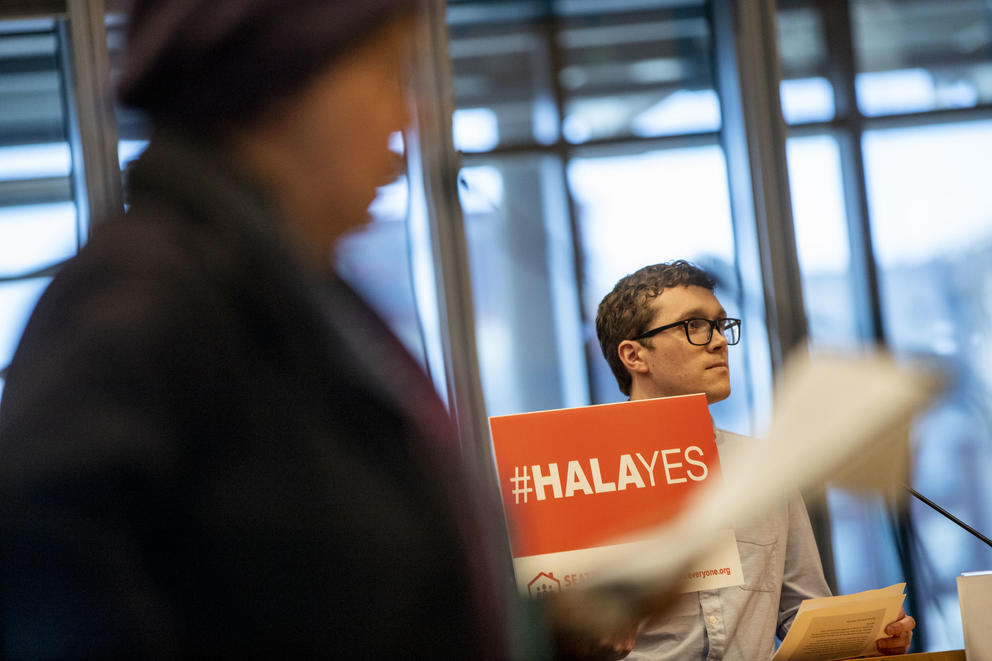Yet, all told, citywide MHA and the MHA programs already in place in six neighborhoods are expected to generate about 6,000 units of affordable housing over the next 10 years, far short of the city’s stated goal of creating 20,000 units of rent-restricted affordable housing in a decade. There’s also the goal of creating 30,000 units of market-rate housing over that same time frame — an increase in supply that the city hopes will meet the population boom’s rampant demand.
So, while the dust hasn’t even settled on MHA, city leaders contend they have a lot of work to do on housing. And they may not have much time to do it. Four of the nine current council members have already announced they’re not running for re-election in this fall’s election. Three others are running to hold their seats.
The political leanings of the city council could look drastically different next year. In fact, the council will begin the shift sooner than anticipated, following the news this morning that Councilmember Rob Johnson would be leaving his post in April. Depending on how the political winds blow, passing housing policies could be a breeze or an impossible hurdle next year.
“I think the biggest job for YIMBYs and urbanists coming out of MHA is electing a pro-housing majority in the 2019 election,” said Laura Loe of pro density group Share the Cities. “It’s about making sure we not only get people to say they support citywide rezones, but really get people on the record about what they mean.”
Sarajane Siegfriedt was one of MHA’s staunch opponents and part of the coalition that appealed to the city hearing examiner to block the proposal. She told the Seattle Times, “I certainly see this as an issue in the elections. We have an opportunity to elect a council majority that supports neighborhood planning.”
The current council is already thinking beyond MHA. Crosscut spoke to several council members, housing advocates and MHA opponents to get a sense of what the next big housing fight at city hall might look like.
“This week we celebrate and we also plan,” Councilmember Teresa Mosqueda told Crosscut. “[MHA] is just the tip of the iceberg.”
Backyard cottages to the front
One of the obvious next fights will be over the city council’s effort to fuel construction by loosening regulations on building backyard cottages and basement apartments. Known as accessory dwelling units (ADUs), such housing is currently legal throughout the city, but only about 1,000 have been built in Seattle since 1995. City officials hope to spur more ADU construction by allowing construction of both a mother-in-law apartment and a backyard cottage on the same property, allowing these units to be larger, and loosening other regulations to make the housing less expensive to build. In turn, the theory goes, those ADUs will help meet demand for housing in the region by offering less-expensive rental options for middle-income residents.
“It’s emblematic of this sea change of opening up the city to allow for more small-scale development on each lot,” said Matt Hutchins of the pro-ADU group MOAR Seattle.
Making it easier to build ADUs was another of HALA’s 65 recommendations, but efforts to make good on those plans have been stalled. Councilmember Mike O’Brien introduced legislation to loosen ADU regulations in December 2015. By June 2016, neighborhood groups, led by the Queen Anne Community Council, had filed the first of two legal challenges to the city’s proposal. They charge that the change will eliminate true single-family neighborhoods in Seattle. Council members say they expect to take up ADU legislation again this summer and the opponents are sure to be there ready to fight back.
Get daily news in your inbox
This newsletter curates some of the most important headlines of the day from Crosscut and other news outlets.
More upzones
Monday’s city council vote was to pass “citywide” MHA, but that’s something of a misnomer since the upzones are taking place only in 27 neighborhoods. Combined with the earlier MHA programs, only 33 of Seattle’s more than 100 neighborhoods have been upzoned through MHA. Councilmember Rob Johnson sees the MHA program as the new floor for zoning changes, not the ceiling.
“In the 2020 to 2022 time frame, I think the council will continue working on individualized zoning changes,” Johnson said. “It could be for housing around future light rail stations or individual properties and neighborhood commercial areas outside urban villages that wouldn’t be included in the MHA proposal.”
An end to single-family zoning
Councilmember Mosqueda wants to take things much further and eliminate single-family zoning as it exists today. Instead she wants a broader “residential” designation that would allow denser housing, including duplexes, triplexes and perhaps even small apartment buildings, instead of standalone homes. Minneapolis recently made headlines for doing just that. Portland’s city council is inching closer to voting on something similar with its residential infill project. It was a recommendation at the heart of the Seattle Planning Commission’s recent Neighborhoods for All report.
“The most, most, most important thing is going to be a comprehensive plan amendment to do infill like Portland is doing,” said Loe of Share the Cities. “Let’s make our city ‘plexible’ with duplexes and triplex.”
Citywide MHA upzoned about 6 percent of the existing single-family zones to allow multifamily housing. That caused a major uproar on its own. Eliminating single-family zoning in its entirety would surely bring furious opposition. In fact, the idea already once did.
Allowing duplexes and triplexes throughout single-family zones was a proposal in HALA. But the blowback to it was swift after a Seattle Times columnist released a leaked draft of the report and former Mayor Ed Murray quickly dropped the idea.
“It’s unfortunate that Ed Murray scaled back on that one housing policy because he heard from the loudest voices who were raising fears of the unknown,” said Mosqueda. “But they were fears we could have tackled together if we’d moved forward.”
Disrupting displacement
MHA will help create some affordable housing over time, which will help low-income residents in the future, but Councilmember Lisa Herbold thinks the city needs to do a lot more right now to keep Seattle’s current lower-income residents from being pushed out.
“There’s a real policy disconnect between what we think is going to happen and what communities have been seeing happen for generations,” she said. “Never in history has purely adding supply sufficiently mitigated the impacts of housing demolitions on displacement. … It’s really troubling to me.”
To that end, Herbold is working on a measure that would require for-profit developers who demolish existing affordable housing in high-risk, low-opportunity neighborhoods to replace the lost units or pay a fee into the city’s affordable housing fund.
Herbold is also working with Mayor Jenny Durkan on a community preference policy that would give low-income residents of a neighborhood preferential access to city-funded affordable housing projects built in their community. The details are still being hashed out, but the policy might also extend to residents displaced by the rising cost of living, giving people pushed out of Seattle a chance to return.
Correction: This story has been updated to correct Laura Loe's last name.




